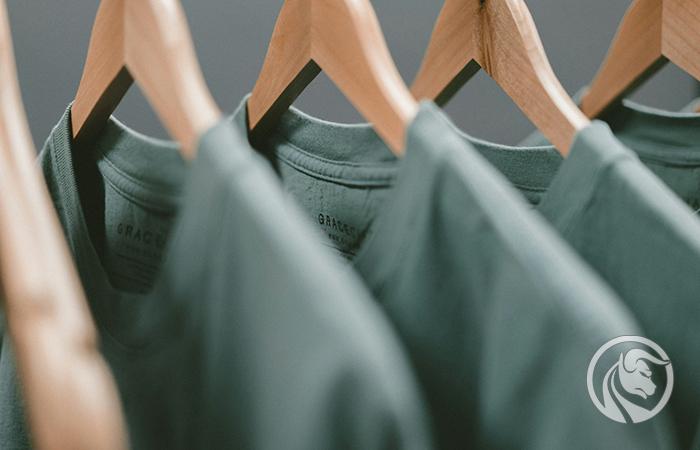The fabric of our everyday lives and cotton becoming more expensive
Struggling commodities are finally seeing some relief thanks to stronger global growth, a stabilizing US dollar and supply-side disruptions. Cotton is a leader in making up for these arrears. Fabric plays a key role not only in our everyday lives, but especially in the clothing, fast fashion and retail sectors. It is also at the center of the ESG debate due to its high water absorption and efficiency, as well as the advantages of biodegradability compared to petroleum-based fibers that dominate the clothing industry. Cotton prices are driven by drought and wildfires in Texas, which is the largest producer in the largest export country. Moreover, there is a close correlation with rising oil prices, which increase the costs of competing polyester. This correlation makes cotton an interesting proxy for oil prices.
SUPPLY
Indie i China dominate the world production of raw cotton, accounting for 47 percent. whole, but most of their production is used locally. The United States is the largest exporter of raw cotton, providing 29 percent. as a whole, which has a significant impact on the trade market. A quarter of these exports come from Texas. In addition, the United States is the largest importer of finished cotton products. Brazil is the second largest exporter, with as much as 26% share, where cotton is often grown as a rotation crop with soy. The raw cotton is then milled in countries such as Bangladesh, Vietnam and China. Global supply is growing at a rate of approximately 2,5%. annually, thanks to new areas of cultivation in the Indian subcontinent and China, and higher yields obtained from GMO seeds, despite growing water and labor problems.
DEMAND
Petroleum-based synthetic fibers such as polyester dominate the global clothing market, with a share of 70%. (and still growing). This makes their relative price a key factor influencing demand for cotton. Cotton maintains an average price premium of approximately $0,50/lb. It dominates the natural fiber market, with an 80% share in clothing, mainly denim. The remainder is mainly household items such as sheets and towels. Therefore, consumer spending, especially on fast-fashion products, is the main factor driving demand. Due to cotton prices and sustainability issues, retailers such as Inditex (ITX.MC), H&M (HM-B.ST), IPO-pending Shein and apparel stocks like GAP (GPS) and Levi Strauss (LEVI) face significant challenges.
Ben Laidler

Global Market Strategist at eToro. Capital investment manager with 25 years of experience in the financial industry, incl. at JP Morgan, UBS and Rothschild, including over 10 years as the # 1 investment strategist in the Institutional Investor Survey. Ben was the CEO of the independent research firm Tower Hudson in London and previously Global Equity Strategist, Global Head of Sector Research and Head of Americas Research at HSBC in New York. He is a graduate of LSE and Cambridge University, and a member of the Institute of Investment Management & Research (AIIMR).






















![Forex Club – Tax 9 – Settle tax on a foreign broker [Download the Application] Forex Club - Tax 9](https://forexclub.pl/wp-content/uploads/2024/02/Forex-Club-Podatek-9-184x120.jpg?v=1709046278)
![Trading View platform – solutions tailored to the needs of traders [Review] trading view review](https://forexclub.pl/wp-content/uploads/2024/03/trading-view-recenzja-184x120.jpg?v=1709558918)
![How to connect your FP Markets account to the Trading View platform [Guide] fp markets trading view](https://forexclub.pl/wp-content/uploads/2024/02/fp-markets-trading-view-184x120.jpg?v=1708677291)
![How to invest in ChatGPT and AI? Stocks and ETFs [Guide] how to invest in chatgpt and artificial intelligence](https://forexclub.pl/wp-content/uploads/2023/02/jak-inwestowac-w-chatgpt-i-sztuczna-inteligencje-184x120.jpg?v=1676364263)


![WeWork – the anatomy of the collapse of a company valued at $47 billion [WeWork, part II] wework bankruptcy story](https://forexclub.pl/wp-content/uploads/2024/04/wework-bankructwo-historia-184x120.jpg?v=1711729561)
![Adam Neumann – the man who screwed up Softbank [WeWork, part AND] adam neumann wework](https://forexclub.pl/wp-content/uploads/2024/04/adam-neumann-wework-184x120.jpg?v=1711728724)





![How to transfer shares to another brokerage office [Procedure description] how to transfer shares to another brokerage house](https://forexclub.pl/wp-content/uploads/2024/03/jak-przeniesc-akcje-do-innego-biura-maklerskiego-184x120.jpg?v=1709556924)

![The most common mistakes of a beginner trader - Mr Yogi [VIDEO] Scalping - The most common mistakes of a beginner trader - VIDEO](https://forexclub.pl/wp-content/uploads/2024/03/Scalping-Najczestsze-bledy-poczatkujacego-tradera-VIDEO-184x120.jpg?v=1711601376)
![Learning patience: No position is also a position - Mr Yogi [VIDEO] Scalping - Learning patience - No position is also a position - VIDEO](https://forexclub.pl/wp-content/uploads/2024/03/Scalping-Nauka-cierpliwosci-Brak-pozycji-to-tez-pozycja-VIDEO-184x120.jpg?v=1710999249)
![When to exit a position and how to minimize losses - Mr Yogi [VIDEO] Scalping - When to exit a position and how to minimize losses - VIDEO](https://forexclub.pl/wp-content/uploads/2024/03/Scalping-Kiedy-wyjsc-z-pozycji-i-jak-minimalizowac-straty-VIDEO-184x120.jpg?v=1710336731)



![Supply and demand on the chart without volume - Mieczysław Siudek [Video] 1 Mieczyslaw Siudek](https://forexclub.pl/wp-content/uploads/2022/03/1-mieczyslaw-siudek-300x200.jpg?v=1646816755)



